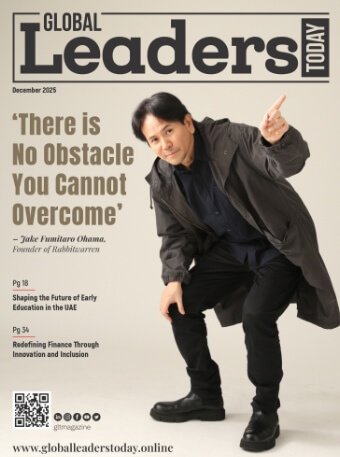The impact of a relentless pace: how leaders cope
The tendency is to ‘do it all’ – to balance competing priorities and hedge your bets by keeping all bases covered. Leaders try to do it all without failing: maintain a resilient facade that is impenetrable to the inevitable blows that come with the need to deliver significant results, adapt to changing goalposts, make do with incomplete teams, capacity or capabilities and engage resistant shareholders.
Many organizations compromise quality in their quest to do too much. They fail to achieve results on costly initiatives, fall short of objectives and do not deliver the expected return on investment unless there is a clear focus. This is especially true given the finite time, resources and rapidly growing expectations of customers and consumers.
It is challenging to decipher what is important and urgent. In my experience, there is a demand for leaders to speed up and they expect their people to drive more outcomes and concentrate on their tasks. This creates a vicious circle, which requires people to do whatever it takes to deliver results in an unremitting dynamic that sweeps through the veins and arteries of our leaders, draining away their lifeblood.
This frantic pace generates a paradigm of constant action, which is detrimental to the quality of results and the health of the people at every level of the organization. In 2019, the World Economic Forum reported some sobering statistics about the prevalence of anxiety globally. According to the WEF’s data, in 2019, an estimated 275 million people – about 4% of the world’s population – suffered from an anxiety disorder. Anxiety disorders can present differently, but typical symptoms include:
- Apprehension (eg feeling uneasy, worrying about the future, struggling to focus).
- Motor tension (eg feeling restless, fidgety and physically tense, shaking).
- Autonomic hyperactivity (eg feeling dizzy or faint, sweating, experiencing palpitations and rapid breathing, having abdominal pains).
Despite the continued encouragement from business schools, literature and discourse for leaders and managers to adopt espoused behaviors such as being purposeful, agile, humble and empathetic and model caring for their own and others’ wellbeing, I continue to meet leaders who feel stuck. Whether they are caught in the relentless mechanics of the machine and lack the perspective to make changes or they are ‘too busy’ (which is paradoxically used as a valid reason not to slow down and question things that are no longer working) or they have burnt out, I witness too many leaders suffering versions of these undesirable effects. If our leaders get stuck in a cycle of trying to work out how to navigate the challenging context, racing between conflicting demands and maintaining a sense of self, what does this mean for wider organizational populations – our people?
Situationism (a term used by social psychologists) proposes that behavior is an outcome of environmental factors that surround us, be it the culture of our organizations, the paradigm or collective mindset of our people or the opportunities and challenges faced by businesses. Is it a profitable business, feeding an ethos of abundance and possibility, or is it loss-making, fuelling a mentality of scarcity?
Dispositionism, which has its roots in Jungian psychology, suggests behaviors are a product of our innate attributes and personality preferences. Social psychology has evolved towards the notion that the environment and our personal traits are both valid segments of our behavior. Early influences from my university studies in philosophy enlightened me to dialogues involving Socrates and his pupil Plato – whose frame was that the state controls the individual and the social context influences individuals’ social responsibilities.
A neuroscientific lens on people’s responses in this frenetic environment offers the view of the reptilian (most primitive) part of our brains – the part that, before we developed, was simply in place to keep us safe. The context faced by our leaders would suggest there is a predominant fight-or-flight need and response. A recent clarification of this theory is that there is a valid third response – a freeze stance, which suggests that people can experience a ‘stuck’ reality.
Stress: a silent predator
My learnings about the mechanics of stress have alerted me to how grossly underestimated it is as a factor affecting the livelihood of so many of us, and especially over time, with great consequences for health longer term.
Sympathetic dominance
Our nervous system contains a part that works without us having to think about it. This is called our autonomic nervous system: it comprises two branches, the ‘parasympathetic’ and ‘sympathetic’, each designed to meet different goals.
When it powers up, the sympathetic system activates stress hormones to increase the heart’s contraction rate and body’s alertness to help us combat threatening situations and do whatever it takes to survive. This system supports us through momentary, short term stressful situations.
In contrast, the parasympathetic nervous system allows us to ‘rest and digest’ after the ‘fight or flight’ is over. It supports replenishment, growth and healing. It does this by enabling life-sustaining activities like digestion, blood flow and supply for our organs to function, and the production and distribution of hormones under more stable and less threatening circumstances.
Growing levels of research validate the hypothesis that when we are ‘sympathetic-dominant’ and our nervous system is unbalanced, the sympathetic system becomes the primary control center for our immediate thoughts, actions and responses. As a result, our health suffers. Symptoms and pathologies driven by sympathetic dominance include:
- Shoulder and neck muscle tightness
- Irritability
- Headaches
- Insomnia
- Fatigue
- Difficulty losing weight
- Hair loss
- High blood pressure
- Increased blood clotting factors and risk of deep vein thrombosis (DVT) and stroke
- Digestive problems: bloating, constipation or diarrhea
- Hormonal imbalances including estrogen dominance
- Gallbladder problems
- Uterine fibroids
- Thyroid imbalances
- Polycystic ovary syndrome (PCOS)
- Depression
Our genetics and environmental factors affect health. It is becoming increasingly clear that, for many pathologies, environmental factors play a bigger role than genetics. The field of study called ‘epigenetics’ demonstrates how environmental factors can activate and inactivate genes. Studies involving twins with a similar genetic predisposition for Type II diabetes in which one twin maintains healthy nutrition and physical exercise and invests in emotional wellbeing, while the other does the opposite, have proven that the latter’s choices have led to the illness.
The World Health Organization (WHO) describes health as ‘a state of complete physical, mental and social well being and not merely the absence of disease or infirmity.’[2] Good health includes chemical, emotional or mental, and structural or physiological health – all of which require balance. An untapped opportunity lies in the growing field of naturopathic and integrative medicine. Evidence shows that our bodies have a tremendous capacity for self-regulation and self-healing when nourishing conditions are created and maintained.
We live in a world where intrinsic drivers for personal ambition infuse organizational vision, where personal security and hygiene factors remain necessary conditions for life, and where unrelenting ambiguity and change are the only consistent conditions. All of these conditions and realities drive our autonomic nervous system to default to sympathetic dominance, where we are repeatedly in a state of high alert.
Creating an environment that counteracts the sympathetic system and disrupts our learned and automated responses is critical to counterbalancing this force. A safe space is a vital requirement for individuals, organizational life and our day-to-day reality in teams. Our teams can interact and work using parasympathetic-infused patterns, rather than the ‘fire fighting’ norms I see in many organizations. In a pandemic and post-pandemic world, the fully virtual and hybrid versions of working life add complexities to how we interact. We need to adapt to a new way of working besides the firefighting we have normalized as part of team and organizational life.
To disrupt this relentless and unquestioned dynamic, space, clarity, profound understanding and calm are essential. Only then can we rewire and work from a non sympathetic-dominant stance in which ‘calm’ is our default.
About Samreen:
Samreen McGregor is an executive coach and founder of Turmeric Group. She has a unique ability to create the conditions leaders need to stretch beyond their existing capabilities and her interventions lie in a unique cross-section between business performance, behavioral change and embodied consciousness. Samreen inspires leaders, teams and organizations to embrace adversity as a catalyst for empowerment and wellbeing.








